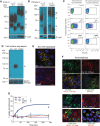The Iodide Transport Defect-Causing Y348D Mutation in the Na+/I- Symporter Renders the Protein Intrinsically Inactive and Impairs Its Targeting to the Plasma Membrane
- PMID: 33779310
- PMCID: PMC8377515
- DOI: 10.1089/thy.2020.0931
The Iodide Transport Defect-Causing Y348D Mutation in the Na+/I- Symporter Renders the Protein Intrinsically Inactive and Impairs Its Targeting to the Plasma Membrane
Abstract
Background: The sodium/iodide (Na+/I-) symporter (NIS) mediates active transport of I- into the thyroid gland. Mutations in the SLC5A5 gene, which encodes NIS, cause I- transport defects (ITDs)-which, if left untreated, lead to congenital hypothyroidism and consequent cognitive and developmental deficiencies. The ITD-causing NIS mutation Y348D, located in transmembrane segment (TMS) 9, was reported in three Sudanese patients. Methods: We generated cDNAs coding for Y348D NIS and mutants with other hydrophilic and hydrophobic amino acid substitutions at position 348 and transfected them into cells. The activity of the resulting mutants was quantitated by radioiodide transport assays. NIS glycosylation was investigated by Western blotting after endoglycosidase H (Endo H) and PNGase-F glycosidase treatment. Subcellular localization of the mutant proteins was ascertained by flow cytometry analysis, cell surface biotinylation, and immunofluorescence. The intrinsic activity of Y348D was studied by measuring radioiodide transport in membrane vesicles prepared from Y348D-NIS-expressing cells. Our NIS homology models and molecular dynamics simulations were used to identify residues that interact with Y348 and investigate possible interactions between Y348 and the membrane. The sequences of several Slc5 family transporters were aligned, and a phylogenetic tree was generated in ClustalX. Results: Cells expressing Y348D NIS transport no I-. Furthermore, Y348D NIS is only partially glycosylated, is retained intracellularly, and is intrinsically inactive. Hydrophilic residues other than Asp at position 348 also yield NIS proteins that fail to be targeted to the plasma membrane (PM), whereas hydrophobic residues at this position, which we show do not interact with the membrane, rescue PM targeting and function. Conclusions: Y348D NIS does not reach the PM and is intrinsically inactive. Hydrophobic amino acid substitutions at position 348, however, preserve NIS activity. Our findings are consistent with our homology model's prediction that Y348 should face the side opposite the TMS9 residues that coordinate Na+ and participate in Na+ transport, and with the notion that Y348 interacts only with hydrophobic residues. Hydrophilic or charged residues at position 348 have deleterious effects on NIS PM targeting and activity, whereas a hydrophobic residue at this position rescues NIS activity.
Keywords: Y348D NIS; intracellular retention of NIS; iodide transport defect-causing NIS mutations; molecular dynamics simulations; sodium/iodide symporter.
Conflict of interest statement
No competing financial interests exist.
Figures




References
-
- Zimmermann MB, Boelaert K. 2015Iodine deficiency and thyroid disorders. Lancet Diabetes Endocrinol 3:286–295 - PubMed
-
- The Iodine Global Network 2020Global Scorecard of Iodine Nutrition in 2020 in the General Population Based on School-Age Children (SAC). IGN, Ottawa, Canada
-
- Carrasco N1993Iodide transport in the thyroid gland. Biochim Biophys Acta 1154:65–82 - PubMed
-
- Dai G, Levy O, Carrasco N. 1996Cloning and characterization of the thyroid iodide transporter. Nature 379:458–460 - PubMed
-
- Levy O, De la Vieja A, Ginter CS, Riedel C, Dai G, Carrasco N. 1998. N-linked glycosylation of the thyroid Na+/I- symporter (NIS). Implications for its secondary structure model. J Biol Chem 273:22657–22663 - PubMed
Publication types
MeSH terms
Substances
Grants and funding
LinkOut - more resources
Full Text Sources
Other Literature Sources
Molecular Biology Databases

